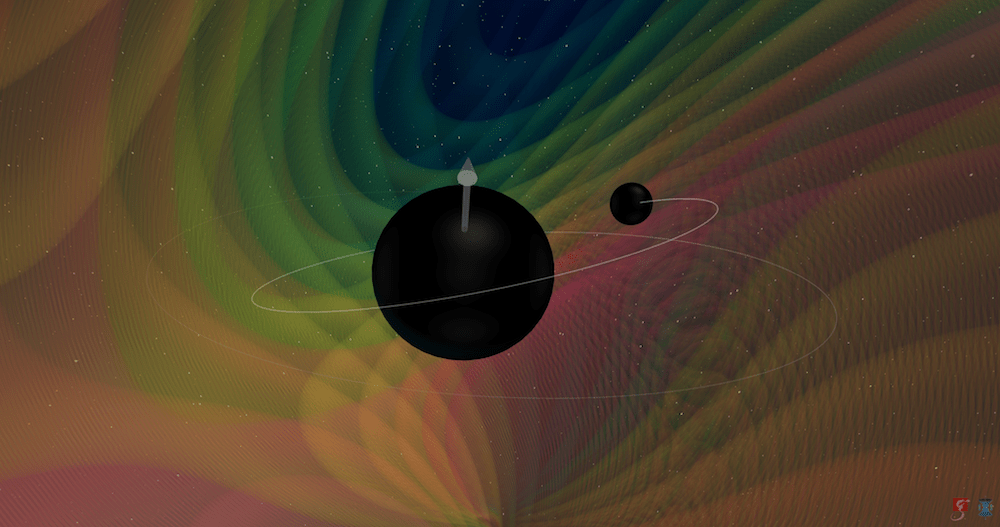When Black Holes Collide They Also Produce Neutrinos
By Paul M. Sutter
Ever since astronomers first detected ultra high energy neutrinos coming from random directions in space, they have not been able to figure out what generates them. But a new hypothesis suggests an unlikely source: the mergers of black holes.
Neutrinos are extremely ghostly particles. The carry no electric charge and they interact only rarely with normal matter through the weak nuclear force. Trillions of neutrinos pass through every square centimeter of your body every single second. So it takes truly enormous observatories to capture them. The largest of all is the IceCube Neutrino Observatory, which is a series of detectors sunk into the Antarctic ice sheet at the South Pole. Occasionally a neutrino will strike a molecule of water ice and lead to a flash of light that the observatory can detect.
While IceCube has seen countless events over the years, a few stand out. Some neutrinos are exceedingly energetic – so energetic that it’s difficult to come up with plausible scenarios that could generate them.
At the other end of the spectrum, perhaps the most powerful objects in the universe are black holes. Their intense gravity can tear apart stars and even power the formation of jets that can blast tens of thousands of light years into space.
So new research suggests that black holes may be responsible for the highest energy neutrinos. However, this can’t work with black holes in isolation Instead the black holes must be surrounded by an electrically charged plasma. That plasma will swirl around the black hole forming an accretion disk. Incredibly strong magnetic and electric fields in the accretion disk can wind their way around the black hole and send material flowing outwards in the form of a jet.
When two black holes merge this changes the direction of the jet, and occasionally the jets can get a boost from the gravitational energy released by the merger.
The authors of the new study suggests that if conditions are just right, the enhancement of the jet during a merger can power insanely high energetic neutrinos.
To match the observed numbers of high-energy neutrinos that IceCube has detected, the authors suggest that these black holes don’t have to merge all that often. If the neutrinos are powered by mergers of supermassive black holes, then they only need to collide between every 100,000 and 10 million years in every cubic gigaparsec of volume. If instead the neutrinos are powered by stellar mass black hole mergers, then they only need to happen 10 to 100 times every year in every cubic gigaparsec of volume.
These are promising numbers because the results sit within the expected range of merger rates of both stellar mass black holes and supermassive black holes. So as mechanisms go, it’s plausible. Only more observations will be able to tell, and hopefully astronomers will be able to pinpoint a source of these extremely energetic exotic particles.
The post When Black Holes Collide They Also Produce Neutrinos appeared first on Universe Today.

November 7, 2022 at 01:31AM
via Universe Today read more...

Post a Comment